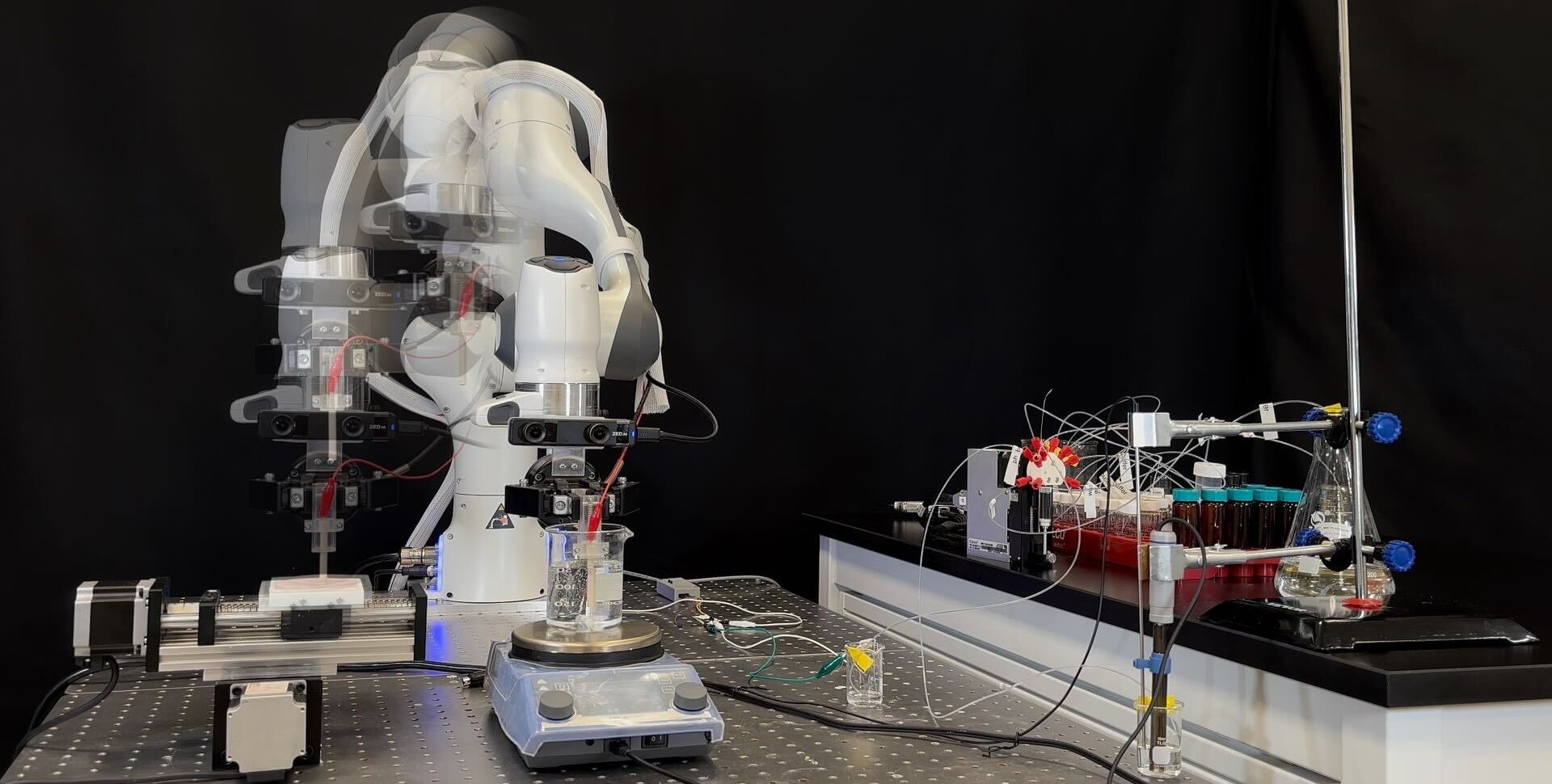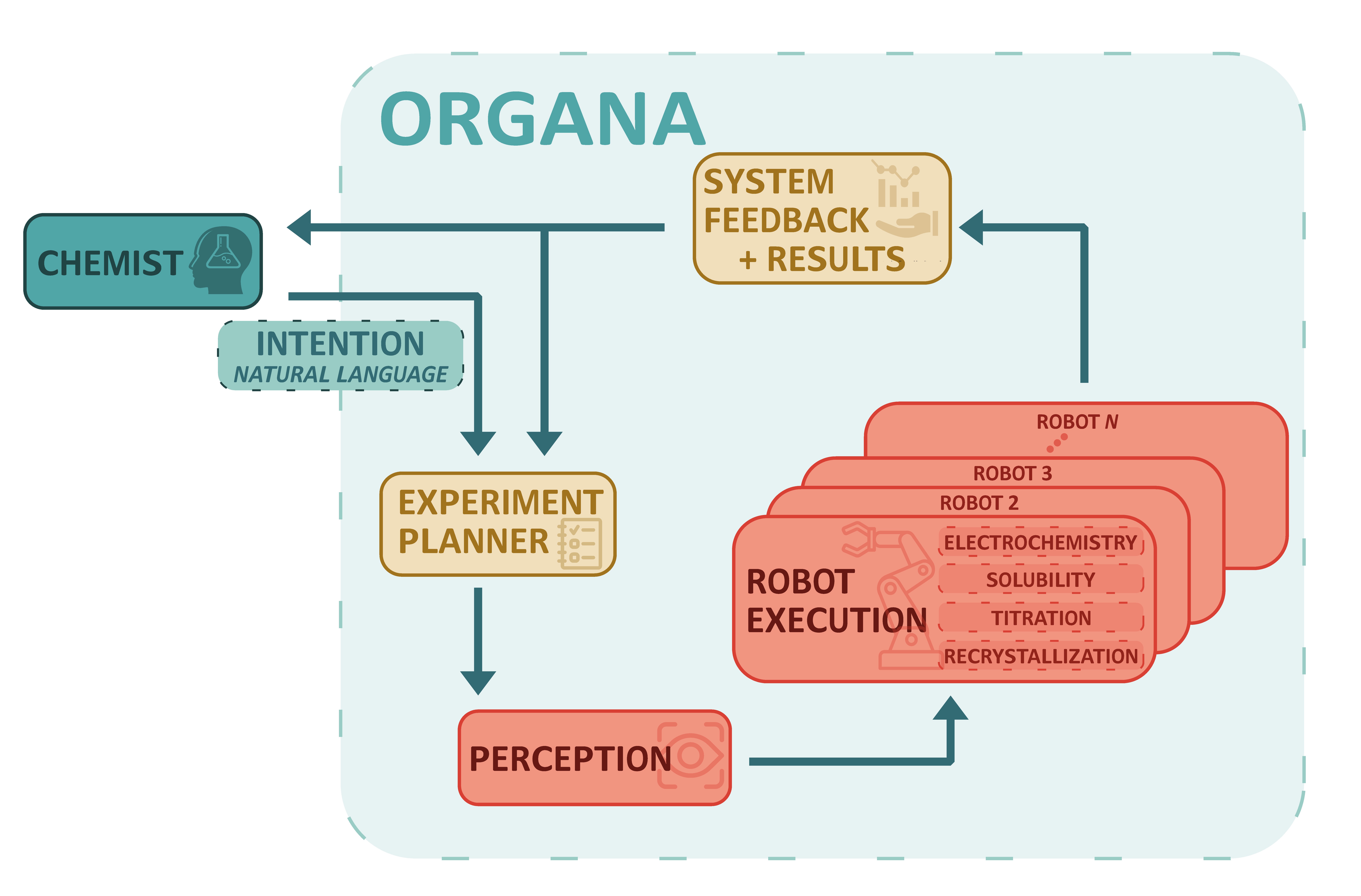
Chemistry experimentation is often time-consuming as well as resource- and labor-intensive. Despite the many benefits incurred by the integration of advanced and special-purpose lab equipment, many aspects of experimentation are still manually conducted by chemists, for example, polishing an electrode in electrochemistry experiments. Traditional lab automation infrastructure faces challenges when it comes to flexibly adapting to new chemistry experiments.
To address this issue, we propose a human-friendly and flexible robotic system, ORGANA, that automates a diverse set of chemistry experiments. It is capable of interacting with chemists in the lab through natural language, using Large Language Models (LLMs). ORGANA keeps scientists informed by providing timely reports that incorporate statistical analyses. Additionally, it actively engages with users when necessary for disambiguation or troubleshooting. ORGANA can reason over user input to derive experiment goals, and plan long sequences of both high-level tasks and low-level robot actions while using feedback from the visual perception of the environment.
It also supports scheduling and parallel execution for experiments that require resource allocation and coordination between multiple robots and experiment stations. We show that ORGANA successfully conducts a diverse set of chemistry experiments, including solubility assessment, pH measurement, recrystallization, and electrochemistry experiments. For the latter, we show that ORGANA robustly executes a long-horizon plan, comprising 19 steps executed in parallel, to characterize the electrochemical properties of quinone derivatives, a class of molecules used in rechargeable flow batteries. Our user study indicates that ORGANA significantly improves many aspects of user experience while reducing their physical workload.

ORGANA provides a seamless interaction between SDLs and chemists for diverse chemistry experiments. It perceives the objects and the progress of the chemistry task to make an informed decision for the next steps of the chemistry experiment. Informed decisions, guided by user intention and perception, are a key strength. ORGANA optimizes SDL efficiency through parallel experiment execution, providing timely feedback via reports and analysis, thus keeping users well-informed and involved in high-level decision-making.
@misc{darvish2024organa,
title={ORGANA: A Robotic Assistant for Automated Chemistry Experimentation and Characterization},
author={Kourosh Darvish and Marta Skreta and Yuchi Zhao and Naruki Yoshikawa and Sagnik Som and Miroslav Bogdanovic and Yang Cao and Han Hao and Haoping Xu and Alán Aspuru-Guzik and Animesh Garg and Florian Shkurti},
year={2024},
eprint={2401.06949},
archivePrefix={arXiv},
primaryClass={cs.RO}
}